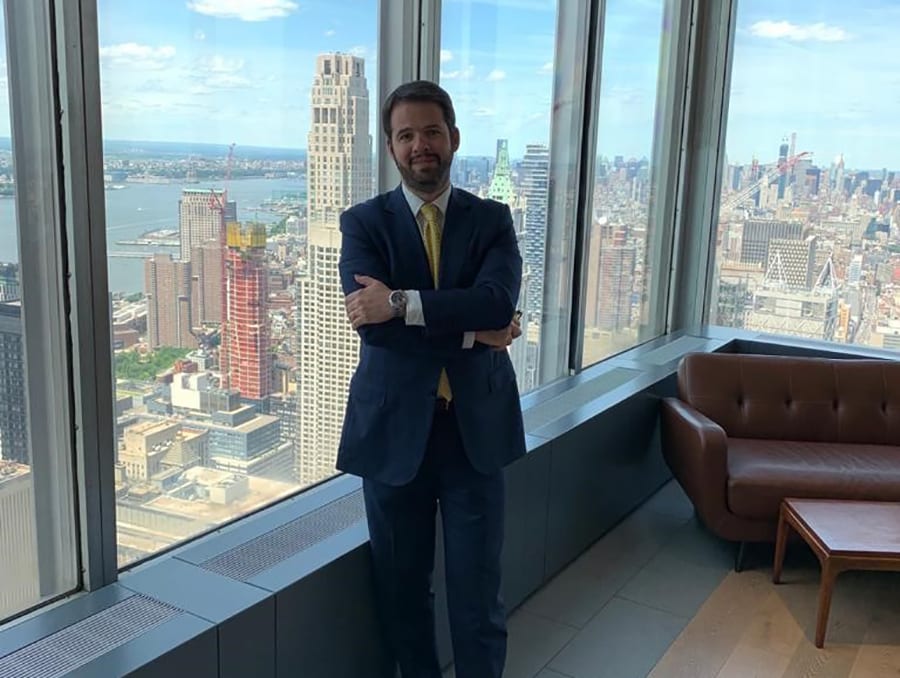The tune is changing. Goldman Sachs is adopting a stricter approach to the remote work situation, requiring employees to return to the office on a full-time basis, as reported by Bloomberg. So, forget about the dream of opening the doors to your office only two or three days a week. The decision by Goldman Sachs to amplify expectations regarding in-office presence might motivate other organizations to do the same. According to Jason Greer, founder and president of Greer Consulting, the prevailing reality is that a return to the five-day office week is imminent. He expressed this sentiment during a CNBC interview, emphasizing that businesses are inclined to enforce this requirement. Greer emphasized that employers perceive the arrangement as straightforward: if you’re paid to work in the office, you’re expected to be there. If someone disagrees, they are free to seek opportunities elsewhere, considering the substantial group of job seekers competing for similar positions. Greer pointed out that the business landscape has changed significantly over the past two years. In the past, companies struggled to attract talent, offering various incentives and higher salaries. However, the current job market offers a surplus of potential candidates, granting them more bargaining power. As a result, companies are inclined to request a full return to the office, even if it means losing a portion of their workforce.
Executives, as noted by Greer, acknowledge the possibility of losing employees due to stricter directives. However, they see this as an opportunity to replace departing staff with individuals who can be hired at more cost-effective compensation levels than those leaving. Greer cited cases where employers went to great lengths, offering $50,000 to $100,000 above the desired salary range during the labor shortage caused by the pandemic. In the current scenario, with layoffs widespread in many industries, employers are in a stronger position. Many companies have also realized that maintaining productivity is achievable with a leaner workforce. Moreover, the push to bring employees back to the physical office is not limited to Goldman Sachs alone.
Major players like Amazon and Meta (formerly known as Facebook) are also exerting similar pressure. Meta, for instance, has communicated the expectation that the majority of employees resume on-site work for at least three days a week starting from September 5. Non-compliance with this directive could potentially jeopardize employees’ jobs. Amazon, on the other hand, is promoting the return of remote employees to their designated “hub” locations or exploring alternative employment options. Interestingly, even Zoom, a company that played a critical role in catalyzing the remote work trend during the COVID Era, is now promoting a greater in-office presence. Zoom is encouraging employees located within 50 miles of its offices to return to on-site work for at least two days a week. Greer emphasized that the reason behind this push for in-office work is rooted in the understanding that certain connections and interactions are irreplaceable in a remote work context characterized by virtual operations. He highlighted the importance of face-to-face interaction in fostering a cohesive organizational culture. This involves managers getting acquainted with their team members, mutual understanding among colleagues, and establishing significant interpersonal dynamics, elements that can only be fully realized through direct, in-person interaction.
Additionally, Amazon officially unveiled its new Fifth Avenue office building, marking a significant shift in their approach to the workplace. Three years ago, they acquired the historic Lord & Taylor department store building from WeWork for nearly $1 billion. In May, the e-commerce giant implemented a three-day-a-week office policy and has been closely monitoring employee locations, reaching out to those suspected of remote work exceeding company guidelines. During the grand opening attended by New York City Mayor Eric Adams, Amazon’s Vice President of Global Real Estate and Facilities, John Schoettler, revealed that employee office presence has been steadily increasing since May, though he refrained from providing specific figures. The company is firmly committed to in-person work, viewing it as the optimal way to foster innovation and serve their customers. Schoettler emphasized the transition period, acknowledging that adjusting to remote work took time for many employees. However, those returning to the office have expressed satisfaction with the change.
The building, located at 424 Fifth Ave., has a rich history. Initially, it served as Lord & Taylor’s flagship department store when it opened in 1914, a distinction it held for over a century. After WeWork’s ambitious plan to transform it into a corporate headquarters fizzled out due to financial troubles, Amazon acquired the property for $978 million, commencing a complex renovation process. Approximately 2,000 of Amazon’s employees now call this building their workplace, constituting a fifth of the company’s current workforce in Manhattan, Queens, Brooklyn, and New Jersey, totaling around 10,000 employees. While Amazon regularly reviews its leases and real estate arrangements, Schoettler expressed uncertainty about any current plans for office space consolidation. The company also holds leases for spaces in other WeWork locations, including 90,000 square feet in RXR Realty’s 75 Rockefeller and nearly 210,000 square feet in 1440 Broadway. Adaptations to the former Lord & Taylor building reflect evolving worker preferences and behaviors. With an increased emphasis on collaboration spaces since the onset of the pandemic, conference rooms have diminished in size, and assigned seating has given way to a “neighborhoods” model.
The building boasts amenities like a rooftop terrace, a dog run, lounges, and a cafeteria named after former Lord & Taylor President Dorothy Shaver. Original artifacts from the department store’s history are integrated into the design. Additional features, such as a plant-adorned staircase, elevators, updated bathrooms, and kitchens, have been incorporated. The ground floor houses both retail and 1,500 square feet of community space established through a partnership with the City University of New York. This opening coincides with the broader challenge of adapting to remote and hybrid work environments. Office availability in Manhattan has reached a historic high of 19.9%, and many employees remain hesitant to return en masse despite encouragement from landlords and officials. Mayor Adams commended Amazon for its contribution to the city’s economic landscape, celebrating the transformation of the Lord & Taylor building as a symbol of growth and adaptation in the heart of New York City. He also playfully encouraged more frequent office attendance, especially for those seeking social interactions in the bustling city.







